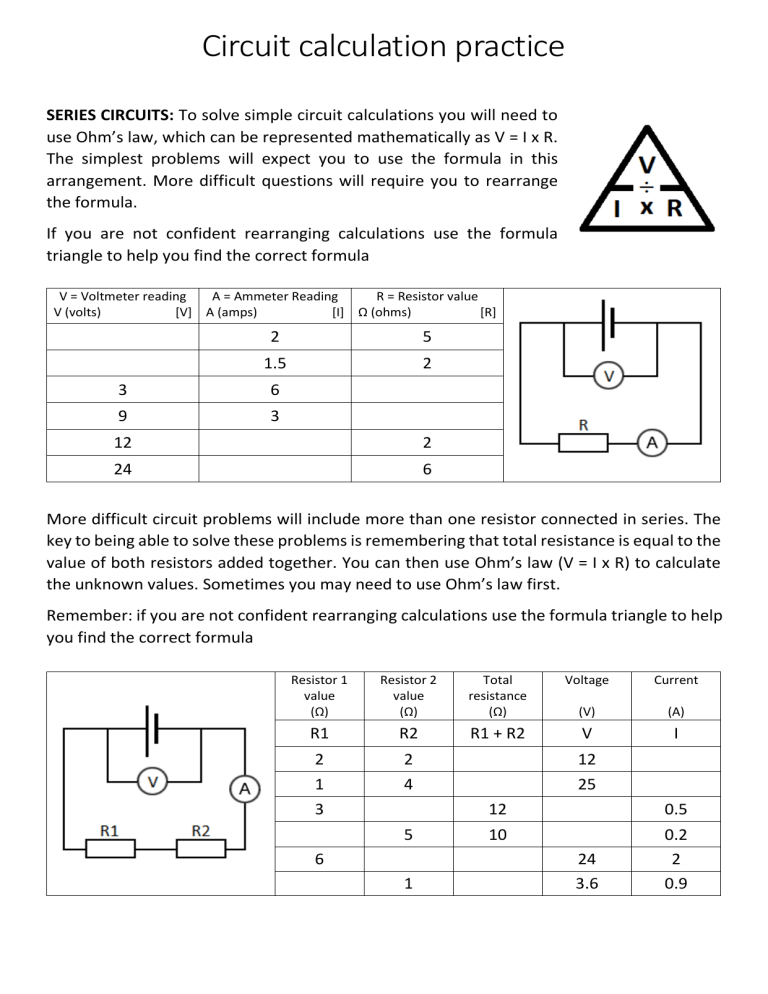
Circuit calculation practice SERIES CIRCUITS: To solve simple circuit calculations you will need to use Ohm’s law, which can be represented mathematically as V = I x R. The simplest problems will expect you to use the formula in this arrangement. More difficult questions will require you to rearrange the formula. If you are not confident rearranging calculations use the formula triangle to help you find the correct formula V = Voltmeter reading A = Ammeter Reading R = Resistor value V (volts) [V] A (amps) [I] Ω (ohms) [R] 2 5 1.5 2 3 6 9 3 12 2 24 6 More difficult circuit problems will include more than one resistor connected in series. The key to being able to solve these problems is remembering that total resistance is equal to the value of both resistors added together. You can then use Ohm’s law (V = I x R) to calculate the unknown values. Sometimes you may need to use Ohm’s law first. Remember: if you are not confident rearranging calculations use the formula triangle to help you find the correct formula Resistor 1 value (Ω) Resistor 2 value (Ω) Total resistance (Ω) Voltage Current (V) (A) R1 R2 R1 + R2 V I 2 2 12 1 4 25 3 5 6 1 12 0.5 10 0.2 2 0.9 24 3.6 Circuit calculation practice PARALLEL CIRCUITS: These circuits have two or more paths for current to flow through. Often the key to solving parallel circuit problems is knowing that voltage is the same across each component of the parallel circuit. Often ammeters are shown in the circuit, these can usually be ignored as they do not affect the operation of the circuit. The second rule to follow when solving parallel circuit problems is that the sum of the currents through each path is equal to the total current that flows from the source or back to the source. V R1 R2 I1 I2 7.5 5 2.5 36 9 6 10 5 5 60 2 3 1.5 2 6 60 200 I3 0.6 100 0.2 0.3 The most complicated circuits you will be expected to solve will combine series and parallel circuits together. You will be expected to make use of all the circuit rules you have met so far. total resistance is in a series circuit is equal to the value of both resistors added together Voltage is the same across each component of the parallel circuit. The sum of the currents through each path is equal to the total current that flows from the source or back to the source. Also the total voltage of more than one cell is equal to the individual cell voltages added together V1 (V) V2 (V) 2 Total voltage R1 (Ω) R2 (Ω) R3 (Ω) 2 20 10 10 1.5 1.5 15 15 15 4 6 2 4 6 10 5 5 3 5 10 4 12 I1 (A) I2 (A) 2 2 1 0.5 I3 (A) 5 2 3 3 2 6 10 1 3 R2 and R3 Combined Resistance 20





